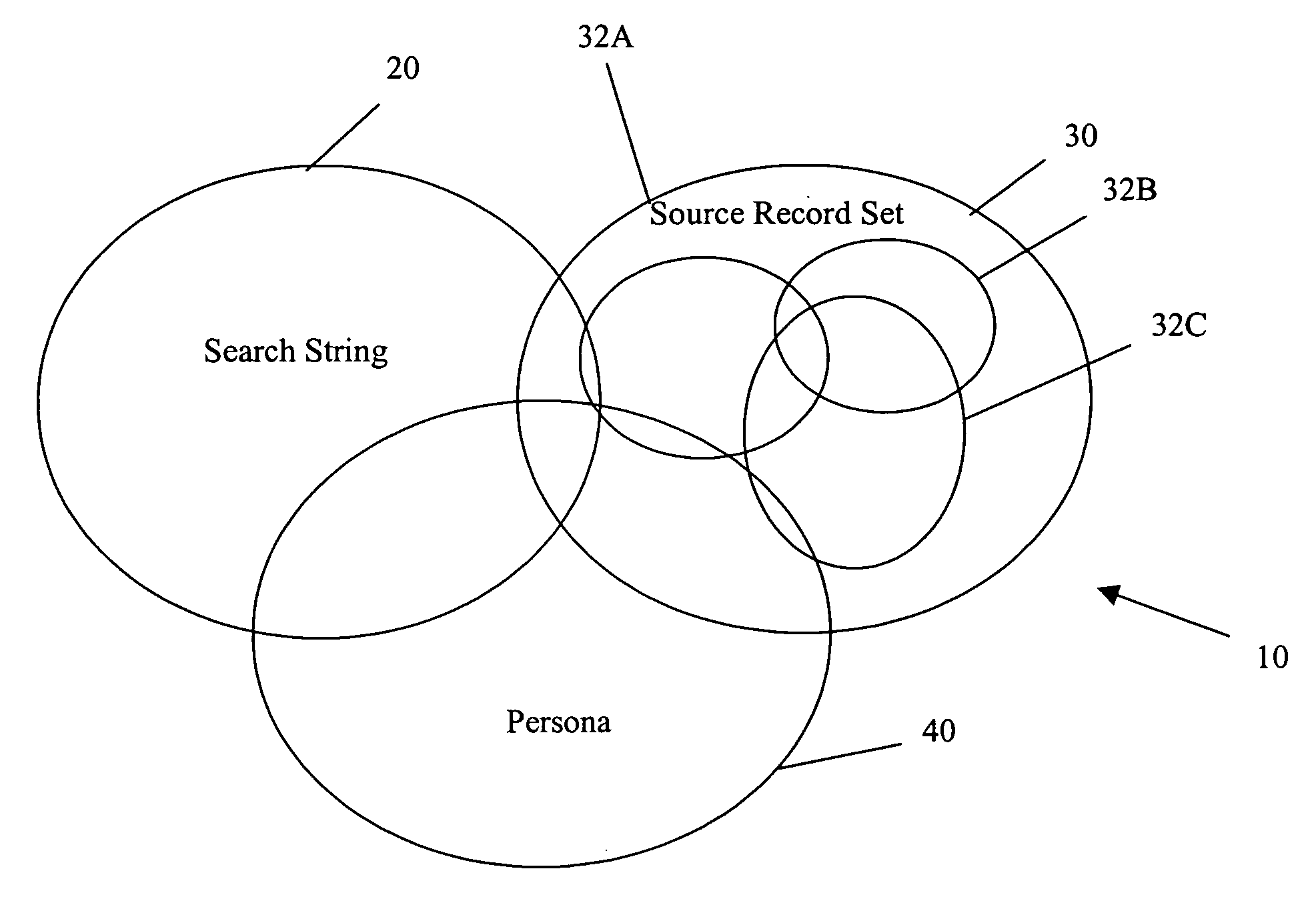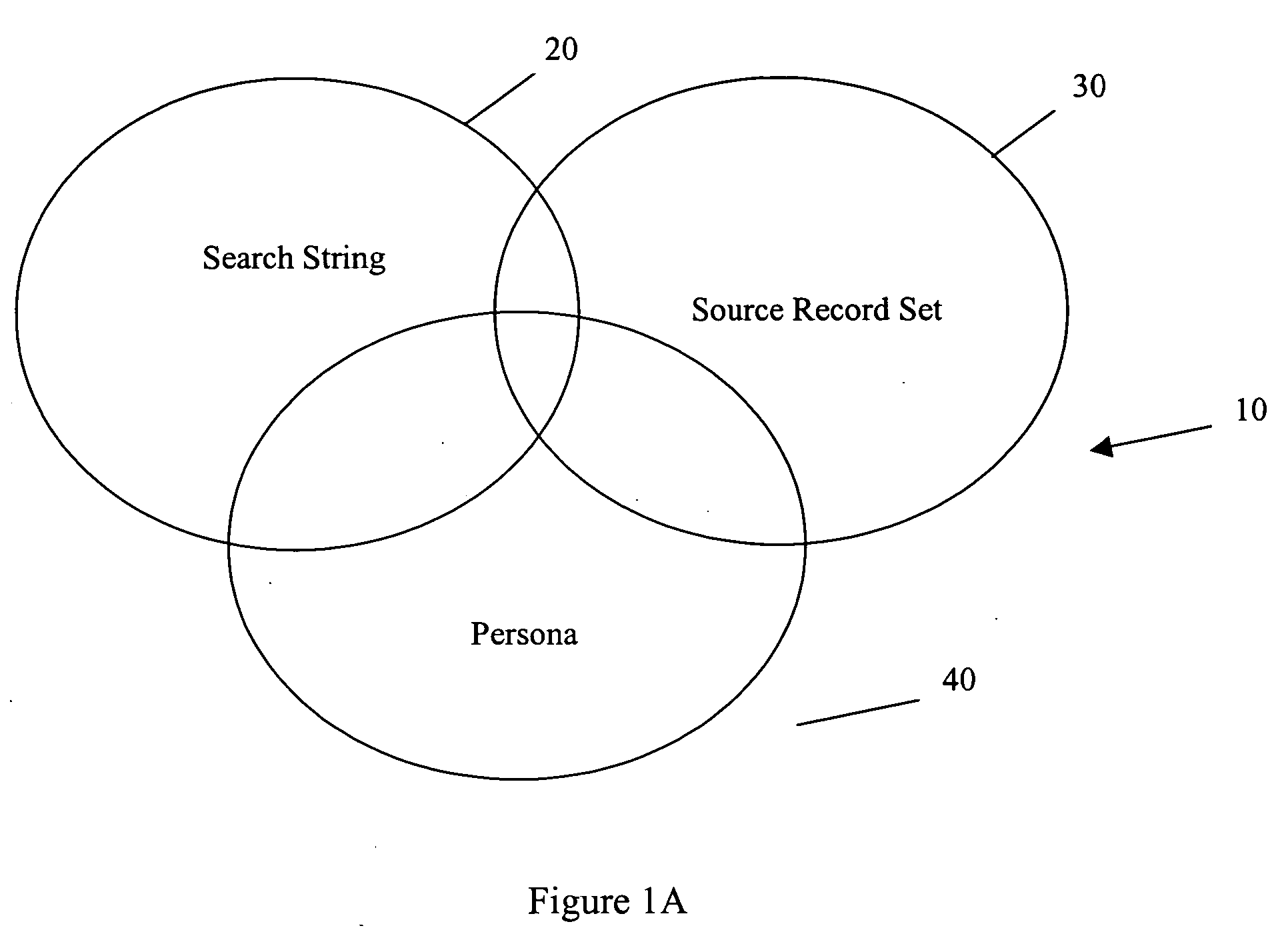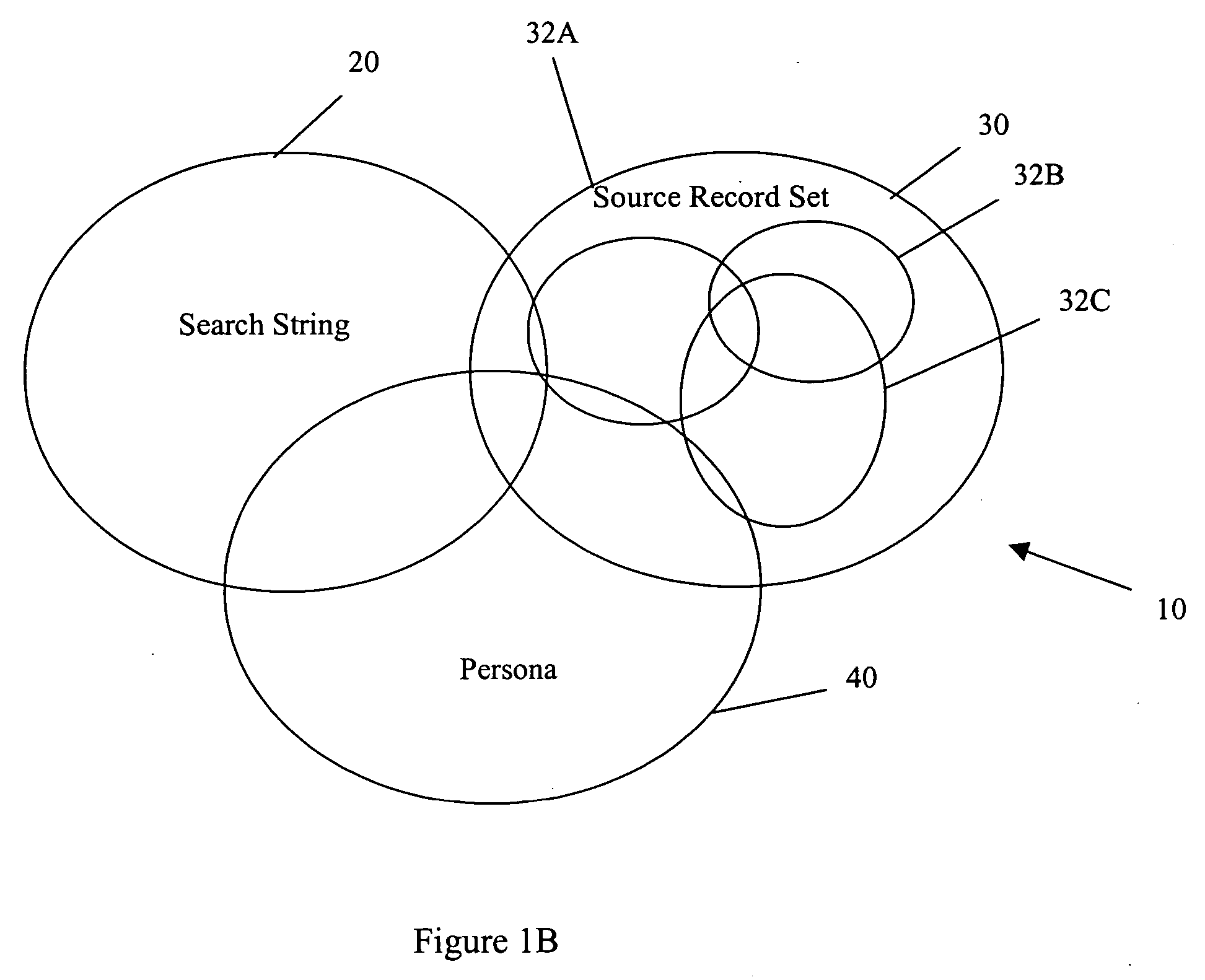Dynamic search processor
a search processor and dynamic technology, applied in the field of information searching, can solve the problems of user missing records, many more records, and often too much data for anyone to realistically review, and achieve the effect of increasing user satisfaction with search engine results
- Summary
- Abstract
- Description
- Claims
- Application Information
AI Technical Summary
Benefits of technology
Problems solved by technology
Method used
Image
Examples
example no.1
EXAMPLE NO. 1
[0056] A specific example will help distinguish the current idea from the prior art. Let's assume that a search engine indexes 500,000,000 web pages. Let's further assume that there are 1000 different choices for persona characteristics in 20 different areas, covering gender (male, female); age (pre-teen, tween, teen, young adult, adult, senior), and marital status (married, unmarried, previously married), employment (unemployed, out of the market, blue collar, professional, sports, etc.); educational status (student, non-student; educational level (grade, junior college, college, graduate); consumer status (looking to buy; looking to sell, browsing, not interested in buying or selling, etc.), and so forth.
[0057] As each user that conducts his searches using a persona, the search engine keeps track of the web pages visited by the user for any significant period of time (e.g. at least 10 seconds), and adds to the counter for each of that person's choices. Thus, if a use...
example no.2
EXAMPLE NO. 2
[0060] In a second example, a searcher (which by the way can be the same person as in example number 1), chooses a persona of a college attending father. He performs a search using the same keywords as above, namely “toys, electronic, Fischer-Price”. That searcher's result set would still consist of the same 137,000 records, but would almost certainly be sorted differently from the result set provided to the person characterizing herself merely as “mother”. The difference in sorting is because people who previously characterized themselves as “mother” would tend to stay longer on different web pages than those characterizing themselves using college-attending father as their persona.
[0061] Returning to the discussion of FIGS. 1A, 1B, it should now be apparent that three circles are needed to describe persona based searches. One circle is needed to represent the universe of possible records 20, another circle to represent the search string (usually keywords) 30, and ano...
example no.3
EXAMPLE NO. 3
[0072] As a further example to demonstrate some of the inventive concepts, it is contemplated that a searcher might be a female medical doctor, aged 35, who is a single parent with three toddlers. The woman may have just arrived at a rental condo in Carmel, Calif., with no rental car. She might engage in one or more of the following:
[0073] Characterize herself by Gender=mother, Marketplace=consumer, and conduct a search for the keywords “baby aspirin”.
[0074] Characterize herself by Vocation=physician, and conduct a search for “thiamine deficiency” for her new book.
[0075] Characterize herself by Age Group=“thirtysomething”, marital status=single, and conduct a search for “Carmel entertainment”.
[0076] Characterize herself by Age Group=toddler, Hobbies=swimming, and conduct a search for “Carmel beaches”.
[0077] Characterize herself by Interests=pets, Travel=vacation, and conduct a search for “hotels kids dogs”.
[0078] Characterize herself by Marketplace=cell phone cust...
PUM
 Login to View More
Login to View More Abstract
Description
Claims
Application Information
 Login to View More
Login to View More - R&D
- Intellectual Property
- Life Sciences
- Materials
- Tech Scout
- Unparalleled Data Quality
- Higher Quality Content
- 60% Fewer Hallucinations
Browse by: Latest US Patents, China's latest patents, Technical Efficacy Thesaurus, Application Domain, Technology Topic, Popular Technical Reports.
© 2025 PatSnap. All rights reserved.Legal|Privacy policy|Modern Slavery Act Transparency Statement|Sitemap|About US| Contact US: help@patsnap.com



